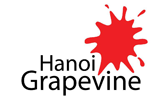KVT – Claire and Peaceful
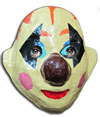
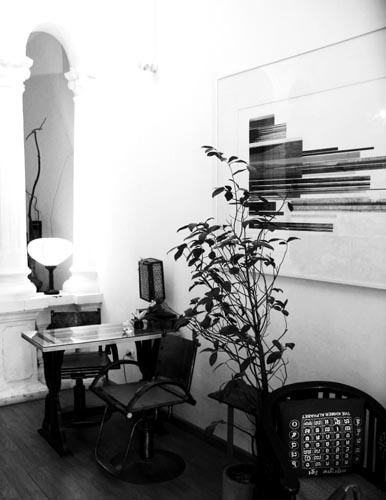
KVT enjoys a moment of quiet reflection at Tadioto
If you get along to comfy cum trendy Tadioto you’ll see the lusciously delicate mixed media drawing on paper by Claire Driscoll. They are elegantly framed and are at times peaceful, meditative and at others beautifully ominous.
If I was going to purchase one or two they’d be the two books in wooden framed glass boxes on the table in the upstairs gallery. They really tickled my fancy.
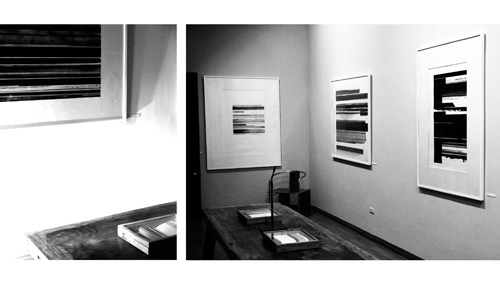
Even though I slapped my wrists every time it crossed my mind, I couldn’t stop the word LANDSCAPE fleeting across my mind as I took in the nicely displayed wall pieces. In my opinion the black and whites with their delicate shades of gray are the most effective and the one titled ‘Nine’ is a stunner and the best of all with its mysterious play of dancing light… and it’s got a red sold spot near it.
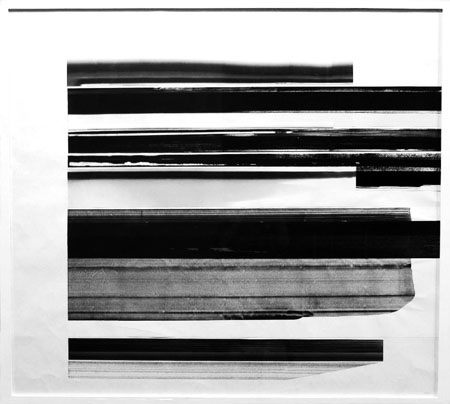
They all seemed to have a very European feel to them and Constable would dwell easily in them as would the large skies of Dutch master Jacob Van Ruisdael.
I think that a second visit may have me seduced by the works in pastelly, earthy tones but thus far it’s the blacks and whites.
The text by Tadioto’s Duc about Claire’s work is one of the best gallery blurbs I’ve read in a long time and suits the work to a T.
Scroll down to see Duc’s article

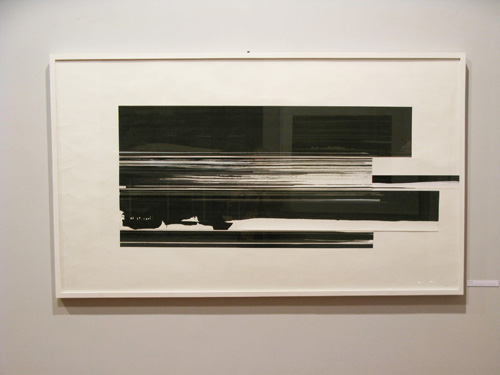
I could have done without the effusive bunches that dominated one end of the little gallery. They sort of took away from the quiet minimalist air that pervaded.
An exhibition well worth catching…as worth catching as a relaxing break in one of Tadioto’s downstairs havens.
Duc’s article:
BETWEEN PARALLEL – CLAIRE DRISCOLL
Even at first glance, it’s evident that in Claire Driscoll’s works there’s definite clarity and simplicity of expression.
What becomes odd is the fact that such a statement may put her works within an Eastern context, for clarity and simplicity of expression is the ultimate requirements and focus of Japanese Sumi-e, or Chinese ink-wash paintings, or in Vietnamese, thủy mặc.
Driscoll’s pieces aren’t done with or on silk or rice paper, and they don’t represent nor represent elements of nature. Still, the Japanese spirit of Wabi-Sabi is evident: beauty in imperfection. Driscoll’s blocks or strips of ink, paint, paper, cut-outs, etc., aren’t perfectly proportioned and squared off. They aren’t graphic statements done with the mechanical aid of computers. The blocks – and parallel lines – don’t end at the same point.
Sumi-e masters are considered so because they’ve gone beyond simply representing peonies, phoenixes or limestone landscape. Rather, the masters managed to place on paper abstract concepts of life, the dark, the bright, and landscapes of mountains and tree branches become symbolic renderings of emotions and human thoughts.
Driscoll does the same, but with blocks of inks, lines and brush strokes of varying lengths, thickness and consistency, patterns, layers, and textures. And expect the same in Driscoll’s works as one would expect in a Sumi-e painting: good lines with good speed, colors or monotonous shades of black or grey to convey depth, balance of space, and rhythm. Driscoll’s compositions are perhaps more violent, definitely more abstract and modern, and yet, equally contemplative, or – if you will – spiritual.
It would be almost laughable to refer to Eastern “Zen paintings” while talking of Driscoll’s work. There aren’t the ink brush circles done with a flourish that purports to symbolize a moment of total relaxation, or an absolutely uncluttered mind that has yielded to the body/spirit to do what it will with total perfection on the paper. But Driscoll’s blocks, lines, energy, and compositions are just that: an abstract set of shapes that must have required a free mind in the process of creation. There seems to be an absence of hesitation, fear, or conscious thinking. In this way, Driscoll also uses the similar creative steps of Mark Rothko – the near-unconscious application of layer upon layer of paint on canvas and to let such layers define the final work.
A conversation with Driscoll about her works also yields this revelation: she is an observer, often inarticulate about what she does, and refuses to directly express her personal self in her “assemblage”: that’s almost a dictum in Zen/sumi-e technique. Let the brush strokes and the painted subject simply “be” – the intrusion of the artist removes the essence of the subject.
In Driscoll’s works, there’s no clear subject, but the results of her creative process come alive on their own: lines move, blocks interact, colors change, and the whole ensemble grows.
Driscoll’s works are difficult to pin down. They aren’t collages, they aren’t paintings, nor are they photographic works. They are all of it – or they have elements of all of these “genres.” One must, with weariness, revert to the French term “tableaux.” A painting can be a “tableaux,” so is an ensemble of images making up something else.
A “tableaux” such as Driscoll’s may bring to mind electronic or computerized sound charts, or colorized mapping of musical compositions. But the emotional impact in Driscoll’s pieces doesn’t come from anything mathematical or mechanical – it is rather a “chance juxtaposition” of her blocks and lines making up the “parallel” on the surface.
That Driscoll cuts and glues strands of paper on paper may be called a “collage” – but when Picasso and Braque termed the practice in the early 20th century, what they had in mind was perhaps an assemblage of images, pieces of paper, cardboard, found objects, newspaper clippings… Together, such different forms make up a new whole. Driscoll is more Zen-like. Her assemblages are mere shapes and lines, but her “collages” aren’t devoid of movements, emotions, or meanings. They make up a new whole that’s just as much a full story, with plots, developments and resolution. And they are full of details—perhaps the reason Driscoll has chosen to call this showing, “between parallel.”
Driscoll’s background in fashion design is apparent. It’s not in the glamour we think about when we think of the fashion world: slim models under the bright lights of catwalks and runways, celebrities on the red carpet in flowing gowns, and designers in gigantic eyeglasses and their just-so tuxedos, sharing cocktails with social elites inside luxury Roman or Middle Easter tents. What designers like Driscoll learn in fashion schools and do behind closed doors have more to do with cutting patterns and choosing the right bit of fabric. But Driscoll has left the fashion world, and she’s using such skills not for our vain and needy bodies, but for the creation of enchanting “tableaux” and “assemblages” to feed more virtuous needs.
The fashion world might have lost Claire Driscoll – but what talent it has lost has been gained by the art world.Hanoi, she says, allows her uninterrupted time, with less art and social stimuli, and thus more introspection for her artist self. The sudden loss of a father less than a year ago has also been an on-going period of grieving, but that terrible situation has lead to much creativity. She cites Ray Bradbury’s advice to artists not to think, or try, and to simply “do.”
Driscoll has done it. Hers are neither Eastern brush paintings nor “collages”: Driscoll’s “tableaux” nevertheless embody a meditative quality and offer a transformative experience. Her layered ensembles succeed brilliantly in allowing the viewer to perceive unexpected depths and penetrate “between parallel” dimensions.
Ng. q. D. 10-2012
![]()
| Kiem Van Tim is a keen observer of life in general and the Hanoi cultural scene in particular and offers some of these observations to the Grapevine. KVT insists that these observations and opinion pieces are not critical reviews. Please see our Comment Guidelines / Moderation Policy and add your thoughts in the comment field below. |
